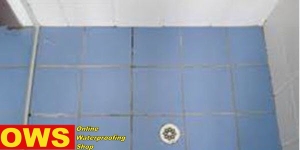Waterproofing Bathroom Floor before Tiling
Waterproofing Bathrooms, Laundry’s and kitchens are usually the wettest rooms in any house. Wet areas when not waterproofed correctly structural damage to your building structure will occur. The moisture can even attract white ants which love damp areas. Areas that remain damp form mould.
This reason alone! That’s essential to choose the best waterproofing materials. Make you sure them waterproofing bathrooms or any other wet areas.
On average a bathroom lasts around 10 years before it’s renovated. In fact this makes it one of the most commonly renovated rooms in the house. Fortunately or unfortunately Australian Standards AS 3740 apply to any waterproofing used. The unfortunate part is that many standards represent only the minimum requirement for the treatment.
Practical Advice for Waterproofing your Bathroom
1. Drizoro Products for Bathrooms and Wet Areas
- Bonded using Drizoro Maxseal Flex
- A Coving using Drizoro Maxrest or Drizoro Maxrite (similar to a cornice)
- Drizoro Maxmesh embedded in Drizoro Maxseal Flex to strengthen the floor wall joint to protect against movement in the joint.
- Final coating of Drizoro Maxseal Flex
- Allow to cure.
Typical for Wet areas waterproofing for bathrooms where there are concrete and masonry surfaces
Drizoro cementitious products are ideally suited for the waterproofing of masonry and concrete surfaces.
2. Traditional Waterproofing Bathroom Floor before Tiling
Apply Polyurethane liquid sealants like a cementitious system(two-coat membrane). Primer the area where specified. Prime where required. Spread the first coat of polyurethane horizontally. From left to right. Finish the second coat with vertical strokes. This approach ensures that any small or pin-sized holes missed during the first coat are completely sealed. 😊
Use Flexible sealant around the bathroom where the bath and vanity units meet the walls. This prevents water getting behind them and causing premature damage.
Note:
- Waterproofing bathrooms wet areas with products which may take a few days to dry or cure, usually this is just a day or 2, check with supplier to make sure, so that you get the correct waterproof seal.
- Don’t disturb the waterproof membranes whilst they’re curing. The plumbing works are to be completed prior to the wet areas waterproofing. The biggest danger to a waterproof membrane is the destruction by other trades.
- Tiling should started only after the waterproofing has completely cured
3. Repair of Bathrooms and wet areas
Repair of Bathrooms and wet areas normally is a renovation which involves a complete makeover of the bathroom. Renovation occurs when tiles, wall panels etc. are replaced. The repair is really just like waterproofing bathrooms an brand new wet area. This can be expensive.
Repair of leaking bathrooms varies from bathroom to bathroom. The faults can be simple or complex. A little silicon often solves the problem
In other cases replacement of mortar line with a waterproof mortar, ordinary mortar and clear sealant applied to the entire tiled area.

SWP Sealtight – Seal your Shower
4. How to Make your Shower Watertight with Sealtight Clear
7 reasons why Sealtight is different to other Clear Sealers?
SealTight best clear sealer because it is made to an environmentally safe Scientific Formula using proprietary ingredients. Once absorbed into the concrete it fills the pores and blocks moisture from coming through the matrix. SealTight becomes part of the concrete chemical matrix and actually increases the strength of the masonry.
Method: – clean the shower to remove grease, unsound particles, scrub thoroughly to remove all the scrum and mould. Replace all silicone sealant as necessary around shower fittings etc. Bluee-Powerclean is recommended for cleaning. Rinse off all
Check all mortar lines for cracks or holes and where faulty replace with waterproof mortar such as Drizoro Maxjoint Flex – waterproof mortar
Wall floor and corners make a small coving for the entire length of the joint. (Drizoro Maxjoint Flex )
Once all the preparation work is completed. ALLOW SHOWER TO DRY (at least 24 hour). Only then start the application of a saturation coat of Sealtight to the entire area.
Conclusion it’s Best to Waterproof Bathroom Floors before Tiling
Repair of Bathrooms and wet areas like all waterproofing requires the correct selection of the proper waterproofing materials. This then gives us the best result. The resultant protection of areas surrounding your bathroom wet area is important.
When is the repair of bathrooms and wet areas is necessary? Bathroom repairs are necessary when ever water is getting past the membrane. It is important to know exactly what causes the problem. Then repair of waterproofing bathrooms is able to be made correctly.
But
What about Waterproofing Bathroom Floors After Tiling?
Now we have ClearCoat specially designed to be applied over leaking tiled surfaces. This is a game winner.
Note:
- Tiles must not be drummy …. sound hollow when tapped.
- Mortar must be intact.
Repair damaged and eroded mortar between tiles. We recommend Drizoro Maxjoint Flex.
Tile Fixing Products from Drizoro








